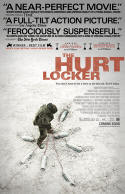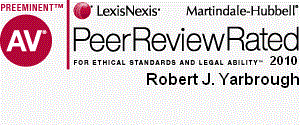Newsletter Issue 84 - February 2016
In this issue:
Terrorists, privacy, and smartphones
The 'right of plublicity'and private citizens
Patenting replacement parts.
Ask Dr. Copyright ...
Dear Doc:
I heard the the "GMen" want Apple to unlock my iPhone, so that they
can see the "stuff" I have saved in there. I thought my iPhone was
encrypted and that only my passcode would open it. What gives?
Signed,
I'd Rather Not Say
Dear Mr. Say:
You heard mostly right. The FBI got a judge to order Apple to create
some special software that removes the passcode security features on
an iPhone used by one of the San Bernardino terrorists. The Feds say
that is the only way that they can find out who else the bad guys
communicated with before they went on their terrible shooting spree.
Sounds like a slam dunk case, right? Who would say that what they
want Apple to do is a bad thing? Who hates freedom and supports
terrorists?
To hear the FBI Director tell it, Apple. That's who!
He's been saying for some time now that a child will die because
Apple encrypts your "stuff" that you store on your iPhone. It also
seems that other Feds agree, because around Thanksgiving last year,
they all agreed to a National Security Council Directive that the
government would do everything that it could to break into iPhones
and other encrypted devices. In this particular case, they are using
a 1789 law called the All Writs Act to force Apple to hack its own
software. Apple has said that it will file objections.
Why would Apple not want to catch terrorists? Because, according to
Tim Cook, Apple's CEO, encryption protects all of us, and once you
show how it can be defeated, then not only the FBI, but spies,
cybercrooks, and totalitarian governments will have access to
private information. Today, we store so much personal and private
data on our phones that the prospect of having it all exposed should
make you shudder like a cold blast from the Polar Vortex. The former
Director of the NSA and CIA, General Michael Hayden, agrees with
Apple. The present CIA Director John Brennan, does not.
The legal issues in the case will likely focus on whether the
government can force a private company that had nothing to do with a
crime to expend a lot of effort, write a lot of new software and do
what is, after all, the FBI's job - investigation of a crime. Apple
may also say that the NSA has lots of experience hacking the iPhone,
so it should do the FBI's dirty work. Finally, this may be a First
Amendment free speech issue: can Apple be ordered to "say" something
in computer code that it does not want to say?
Regardless of where this case ends up, the central issue is our
privacy as citizens. Perhaps the late Justice Scalia said it best:
"There is nothing new in the realization that the Constitution
sometimes insulates the criminality of a few in order to protect the
privacy of us all." Arizona v. Hicks, 480 U.S. 321 (1987).
Have some "stuff" that needs to be protected using patents,
trademarks, copyrights, trade secrets, and contracts? Ask the
attorneys at LW&H. Their iPhones have very complicated passwords!
The "Doc"
Words, War, Film, and the First Amendment
When lawyers and lay people talk about "intellectual property"
(IP) they are usually referring to patents, trademarks, copyright,
and trade secrets. But IP may consist of other rights including the
"right of publicity."
The right of publicity refers to those rights related to control of
the commercial use of one's identity typically consisting of a
person's "name, image and likeness." In Pennsylvania, for example, a
person or a group has exclusive right to control the commercial
value of his/their name and likeness. Other states have similar
laws. The right of publicity overlaps with trademark and unfair
competition laws. According to one source, "like a trademark, the
Right of Publicity can function as a quality assurance to a
consumer, especially if a celebrity, or his or her estate, maintain
self - imposed quality standards and exercises discretion in
licensing publicity rights."
There are limits to the right of publicity particularly when it runs
up against the First Amendment. Jeffrey Sarver, an Iraqi War
veteran, learned this when he sued a journalist, Playboy Magazine,
and the producers and director of a recent blockbuster movie, The
Hurt Locker. Sarver served in the Explosive Ordinance Disposal unit
in the Iraq war from 2004 to 2005. During that time, Mark Boal, a
journalist working for Playboy Magazine was embedded with Sarver's
unit. He followed Boal and took photographs and video of him during
on-duty and off-duty periods. Sarver's life was later the subject of
an article Boal published in Playboy Magazine, a Reader's Digest
adaptation of that article, and Boal's Hurt Locker screenplay.
Sarver alleged in his lawsuit that he never consented to use of his
name to either Playboy magazine or to the producers of Hurt Locker.
In March 2010 Sarver filed a federal lawsuit against Boal, director
Kathryn Bigelow and the movie's producers alleging causes of action
for misappropriation of his likeness and right of publicity and
other causes of action. The lower court dismissed his complaint on
grounds that although the lead character in Hurt Locker was similar
to the Plaintiff, there was "significant amount of original
expressive content" that the film was protectable under the First
Amendment.
On appeal, the United States Circuit Court of Appeals for the Ninth
Circuit, held that California law does not protect speech that
"appropriates the economic value of a performance or persona or
seeks to capitalize on celebrity's making commercial
advertisements." The question, therefore, was whether Hurt Locker
was "commercial speech." The court concluded it was not because
neither the journalist nor the movie producers exploited the
economic value of Sarver's persona; they were just telling a story.
The Ninth Circuit court wrote:
The Hurt Locker is speech that is fully protected by the First
Amendment, which safeguards the storytellers and artists who take
the raw materials of life - - including the stories of real
individuals, ordinary or extraordinary - - and transform them into
art, the articles, books, movies, or place. If California's right of
publicity law applies in this case, it is simply a content-based
speech restriction. As such it is presumptively unconstitutional,
and cannot stand unless Sarver can show a compelling state interest
in preventing the defendants' speech. Because Sarver cannot do so,
applying California's right of publicity in this case would violate
the First Amendment.
The moral: unless you're a celebrity whose persona has acquired
commercial value (remember, like a trademark), your persona may not
be as valuable as you dream.
We will continue to follow this case.
Patenting Replacement Parts and Consumables

Entire industries are built around the business model of a cheap
product and expensive consumables for that product - think ink jet
printers, electric toothbrushes and shaving razors. Controlling
replacement parts also is a lucrative sideline for manufacturers of
big-ticket items - prime examples are automobile fenders and other
collision repair parts.
So why don't competitors step in and make the ink jet cartridge,
shaving razor cartridge, toothbrush head or automobile fender for
cheap and undercut the manufacturers' prices?
The answer: design patents. A design patent protects how a thing
looks, not what the thing does or how the thing does it. The
manufacturer can obtain a design patent for the appearance of its
consumable cartridge or head or its replacement fender. A generic
competitor risks the expenses of litigation and damages if it copies
the consumable or replacement part and infringes the design patent.
The insurance industry and generic parts manufacturers have tried
for years to convince Congress to limit design patent protection for
automobile collision replacement parts, with bills introduced in
2010, 2012, 2013 and, most recently, 2015 (the PARTS Act, H.R. 1057
and S. 560). If the PARTS Act becomes law, it will apply only to OEM
automobile manufacturers and will limit the life of a design patent
for a collision replacement part to 30 months rather than the usual
14 years. Thus far, the insurance and generic parts industry bills
have met with no success. A design patent continues to be a valuable
tool to control the market for replacement parts and consumables.

